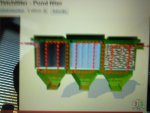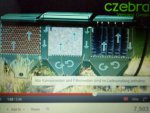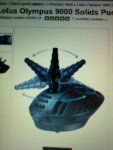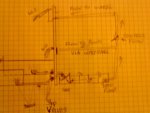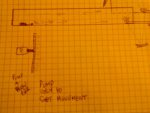Sissy, I've often wondered about using composite wood inside a pond, mainly as a false bottom. I did use Trex many years ago for a deck and it bends a lot more than wood, like taffy. So I think it would depend on the specific brand of composite and also how it was used like if something else provided the structure.
Whiskey, unfortunately my heart just isn't into filters any more. There was a time when I was obsessed, but over time designs and ideas get whittled down and they stop holding much interest. The time of obsession was a fun time, endless possibilities, great fun, lots to learn. I did learn filters have to match the pond and purpose of the pond. There's a surprising amount of subtleties with filters, they rarely act as expected. Really difficult subject to discuss in a helpful way. I think a person just has to learn by doing.
Zen
In general I think most filters are built purely for the fun of building, though few own up to that. There's a thinking that just out of reach is the perfect filter. For example, if a filter collects junk the builder is very happy, the filter works. But an unbiased look into the pond will see lots more junk settled on the pond bottom. The subject can't really be discussed because the builder often gets very defensive, like the filter is their child. The importance of the filter has little to do with the pond and everything to do with a hobby. It's rarely harmful because the filter was never actually needed in the first place. On the other hand, talk to a fish farmer or someone with a serious fish load that absolutely needs proper filtering and they will be quick to study results, adjust and scrap filters. They have no choice.
My point to that little story is that to me is the most important thing about filters is that they can mislead you. Objectivity is the most important component. I don't think a person can really start out objective, you have to have at least some set backs. But I think the faster objectivity grows in importance the faster the filter improves.
Here's some things that popped into my head about your design.
I don't really understand your entire design so these comments might make little sense. Maybe other things were discussed in other thread I didn't read.
Pre Chopping
Ditto what Stroppy said (but it sounded to me like the sieve was first). I didn't understand the distinction made between an external and submersible pumps. Both can be used to get water into a filter without waste first having to go thru the pump and chopped up. The pump goes at the end of filters, or at least after whatever removes the big stuff, and pumps back into the pond which over flows into the filters. The over flow can be bottom drain or an overflow pipe that goes to the bottom of the pond, like a vacuum cleaner. Pre chopping makes filters much less effective. That's an immutable rule in filters. IMO any mechanical (non bio) filter that allowed stuff to go through a pump first would not be a serious design.
Brushes
I've always loved the idea of brushes, they're just cool looking, easy to clean. I assume you're using them to settle out debris. But are brushes effective? Certainly stuff will settle, but how much. If 70, 80, 90% of stuff is still settling inside the pond that stuff still has to be removed. If you have a system for removing that stuff why not let all the stuff settle there. At least every pond I've seen that used brushes that's what I saw, a lot of stuff settled in the pond. Normally that's why I was there, to vacuum the pond.
This is a perfect example of a filter being misleading. The point missed often is whether stuff settles before ever getting to the brushes.
It is possible to design a system which stops stuff from settling inside the pond, lots of water movement. I've only seen that done in high end Koi ponds, fish farm type deals, serious fish loads and I can't remember any of them using brushes. Seems like if they were going to all the trouble to stop stuff settling in the pond that they used higher end filters to catch it. Not sure what that means, just that's what I saw. It didn't lead me to think brushes were overly effective at any rate.
Manufactured filters have a problem in that they're limited by size. So brushes are used to try and slow down water. When making a filter you don't have the size limit, there are better options. Brushes are super cool to me though. Their shape, the way they feel, they seem like a forest of trees. Maybe that's why manufacturers use them. There's 2 ways to sell filters. One is based on scientific data on their effectiveness. The other is appealing directly to first time buyers and their preconceived notions.
Media
I didn't follow the foam, plastic, rock design...is that all for ammonia conversion? For that I prefer media that is cleaned 24/7, like fluidized bed or trickle tower. Trickle towers are easier and cheaper to build and proven to work much better.
For learning and having fun building filters, or tight spaces, I don't think you can beat a fluidized bed. Endless possible shapes, you get to see media flying around and they're proven to work better than submerged media because the media stays clean 24/7.
My thoughts are only relevant to the exact type of pond I like to run and my experience may have nothing to do with your type of pond. I do look forward to reading about your experience. I get nostalgia sometimes for the days of dreaming about the next perfect filter. On the other hand I sleep better now.

